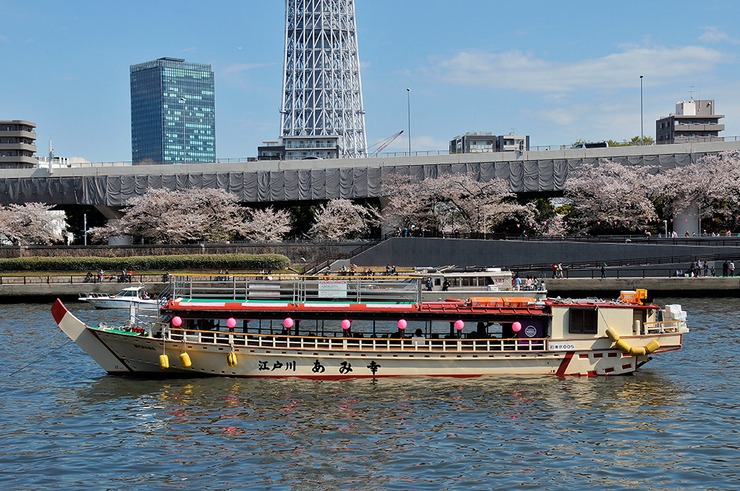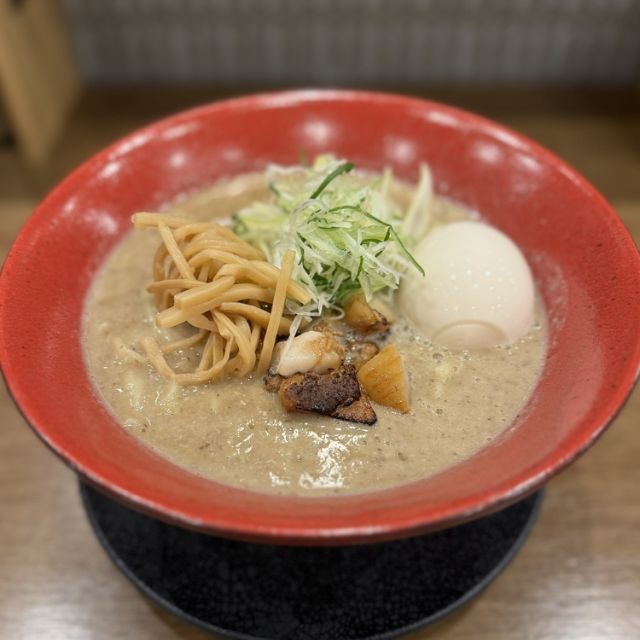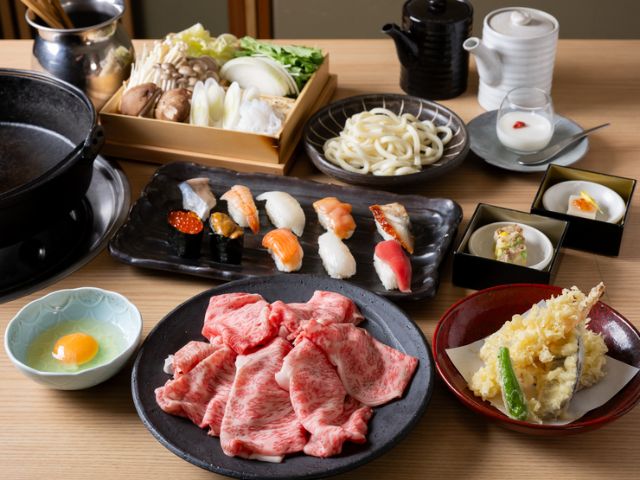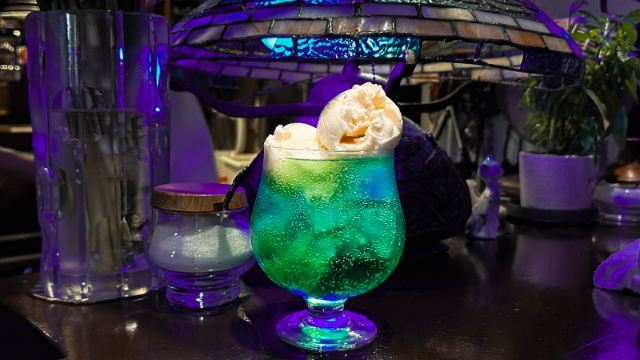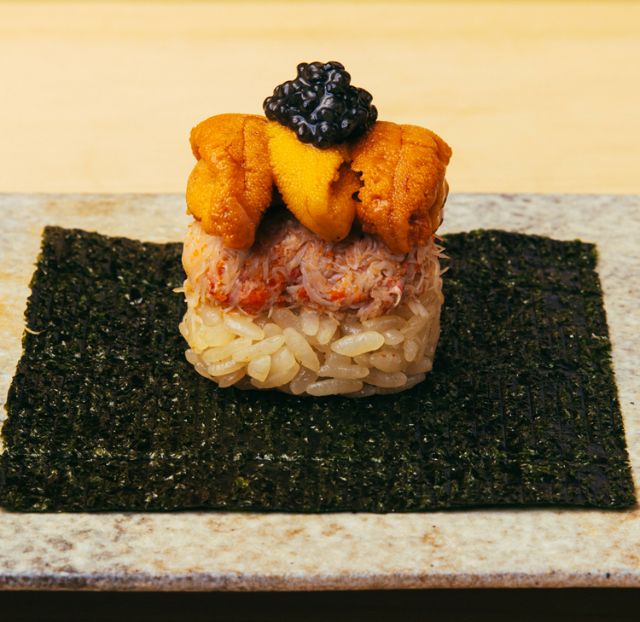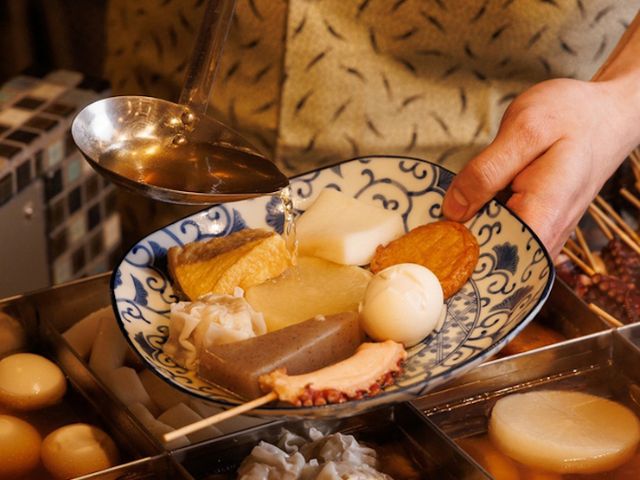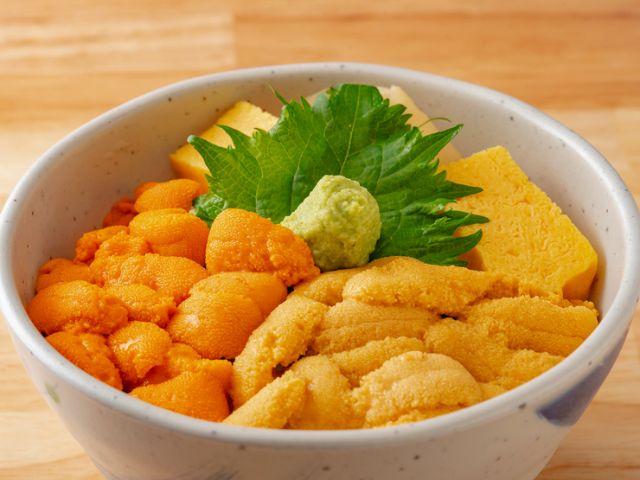All About the Tokyo Specialty Food, Monjayaki
Update-Date: Mar 29, 2024
Author:
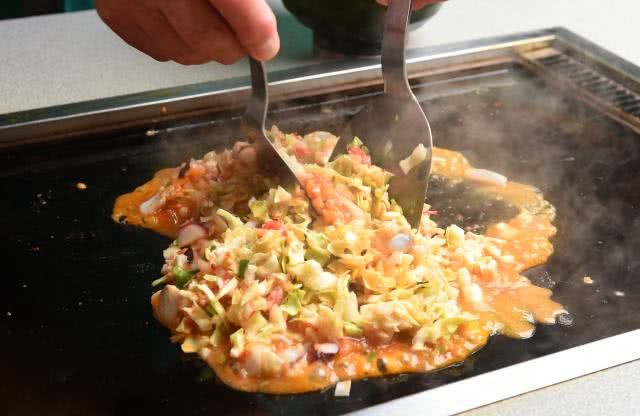
What Is Monjayaki?
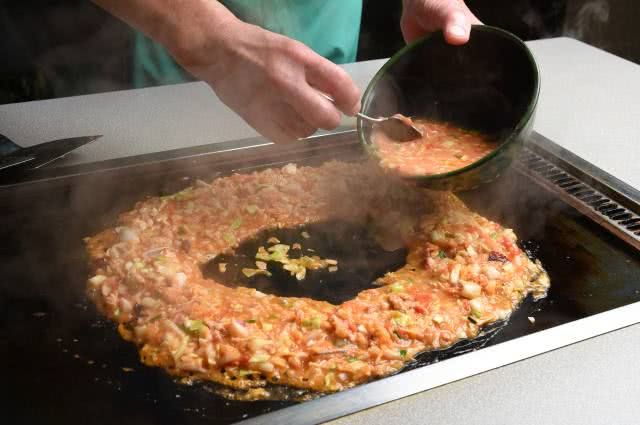
Monjayaki is made by mixing in ingredients like chopped cabbage, pickled ginger, and shrimp with a loose batter of flour and seasonings like Worcester sauce, then grilling the whole mixture on a griddle. Once cooked, it is eaten directly off the griddle using small spatulas. It started as a snack that was sold to children at candy stores during the latter half of the Edo Period (1603–1867).
It was originally called "mojiyaki" (grilled letters), as it was a way for children to learn their letters by writing them on the griddle at a time when writing materials and utensils such as paper and ink brushes were scarce. It is believed that this eventually morphed into the "monjayaki" of today.

When you try monjayaki for the first time, you’re likely to be bewildered by the unique way in which it is prepared and eaten. First, the griddle is heated and oiled, and everything apart from the flavorings and batter is poured onto the griddle. Once the ingredients are lightly cooked, they are gathered together, and a hole is created in the middle using a spatula. The remaining liquid batter is poured into this hole and cooked for about two minutes until the center starts bubbling. Finally, everything is mixed together using a large spatula, spread out thinly on the griddle, and cooked for 3–4 minutes until aromatic.
How Is Monjayaki Different From Okonomiyaki?

While both monjayaki and okonomiyaki are cooked on a griddle, they differ in three major ways.
The first is the amount of water in the batter. In both cases, the batter is made by mixing flour with water, but unlike okonomiyaki batter, which is thick, monjayaki batter is thin and watery.
They are also prepared differently. As explained above, monjayaki is prepared by lightly cooking the ingredients, then pouring in the watery batter and grilling just one side. In contrast, okonomiyaki batter is mixed with the ingredients before being poured onto the grill and cooked thoroughly on both sides. Also, monjayaki is often pre-seasoned with flavorings like Worcester sauce or soup stock, while okonomiyaki is flavored with sauce or mayonnaise after it is cooked.
The third difference is the way that they are eaten. Both are eaten with spatulas, but the size differs. Okonomiyaki can be eaten with chopsticks or large spatulas, while monjayaki is eaten a little bit at a time from the edge using small, teaspoon-size spatulas. Also, monjayaki is cooked in large portions and shared, while okonomiyaki is usually cooked and served in one-person servings.

Monjyayaki can be enjoyed in a variety of ways by combining different ingredients, and it can even be made into a sweet dessert! Strange and wonderful flavors can be created by adding seafood, meat, vegetables, cheese, and even crushed snacks into the basic batter mixture.
A dessert often served at monjayaki restaurants is “ankomaki,” prepared by spreading monjayaki batter out thinly on the griddle like you would a crepe, putting anko (sweet bean paste) on top, and wrapping it with the batter. A great way to finish a meal!
The fabulous flavors created by a combination of the batter, which often includes dashi soup stock and umami-rich ingredients, make monjayaki the perfect accompaniment for alcoholic beverages as well.
Visit Tsukishima, the Monjayaki Center of Tokyo!

With so many restaurants, it may be difficult to decide which restaurant to go to. It is recommended to do some research beforehand, as many have distinct features, such as “zashiki” seating where you dine on a low table with tatami floor seating, private rooms, having a long history of operation, or even being izakaya bar style.
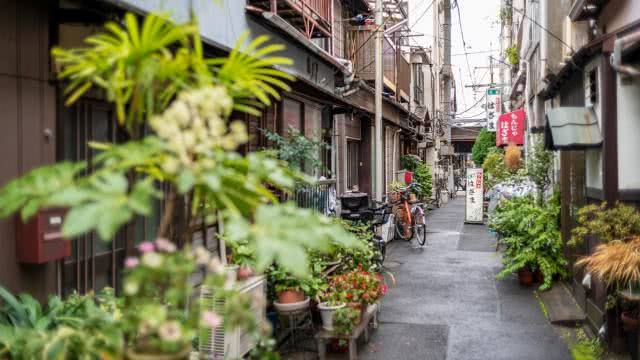
Try Monjayaki in Tokyo's Traditional Working-Class Neighborhood
Daruma (Tsukishima)
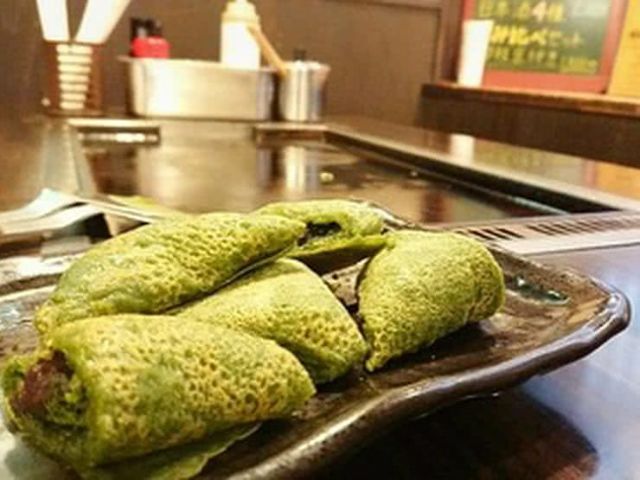
A favorite of monjayaki aficionados, Daruma offers the flexibility of selecting one of two dashi stocks (Japanese-style or chicken bone) to match the flavor of the batter to the rest of the ingredients. The restaurant also prides itself on the freshness of their vegetables and seafood, which are procured from Toyosu Market. An added draw for beer lovers is their draft beer, which is only served at select stores in the Tokyo area. The [Gion Tsujiri Matcha Ankomaki] (847 JPY) made with matcha green tea from the famous Kyoto tea maker, Gion Tsujiri, is a dessert that is not to be missed.
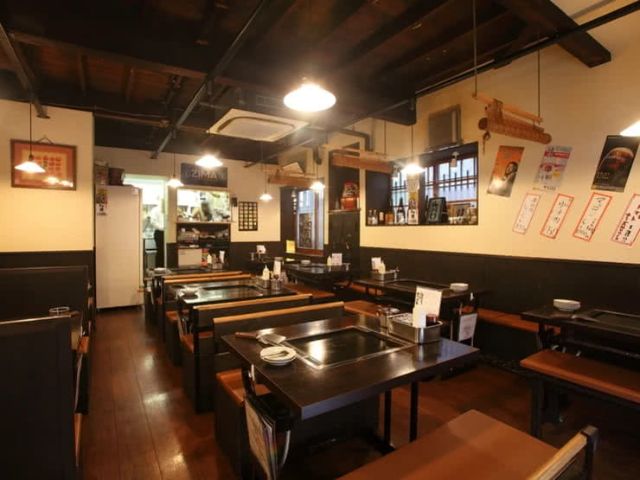
If you are a party of three or more trying monjayaki for the first time, the [Small Daruma Course] (2,500 JPY) is recommended. The course includes a selection of okonomiyaki and yakisoba noodles in addition to the monjayaki, with ankomaki served as dessert. And with an extra 2,500 JPY, it comes with bottomless drinks, including rare draft beers, shochu, sake, and soft drinks. The restaurant is in a renovated old house from the 1920s, so it certainly provides the perfect ambiance for enjoying great drinks together with wonderful casual eats.
Tsukishima specialty Monja Daruma
Closed: We do not accept reservations on Saturdays, Sundays, or holidays. Please visit us directly.
Average price: [Dinner] 2,000 JPY / [Lunch] 1,200 JPY
Access: 3-minute walk from Tsukishima Station on the Toei Oedo Line and Tokyo Metro Yurakucho Line
Address: 3-17-9, Tsukishima, Chuo-ku, Tokyo Map
More Details Reservation
Yoshino (Toyocho)

Yoshino is a warm, cozy family-owned restaurant run by a veteran chef who trained at a famous restaurant. It is the perfect restaurant to try Monjayaki for the first time. All seats are at “horigotatsu” tables that are low to the ground but have recessed floors beneath, so you can take your shoes off and sit comfortably as if at a western-style table. The restaurant is recommended for families with children, as there is plenty of room between the tables.
Their signature [Mentaiko Mochi Cheese] (1,250 JPY (excl. tax)) that includes a whole mentaiko (spicy cod roe) is not to be missed! This is a popular dish, with the firm, succulent mentaiko and the melting cheese creating a sublime, addicting texture.
Their seafood is procured from Tsukiji, so their seafood dishes, such as the grilled [mixed seafood] (1,900 JPY (excl. tax)) that is enhanced by the lovely aroma of butter, are also highly recommended.

Yoshino
Closed: Irregular
Average price: [Dinner] 2,500 JPY / [Lunch] 800 JPY
Access: 2-minute walk from Toyocho Station on the Tokyo Metro Tozai Line
Address: 4-10-16, Toyo, Koto-ku, Tokyo Map
More Details Reservation
Disclaimer: All information is accurate at time of publication.
Thank you for reading our article.
Our goal is to take your culinary journey to the next level by helping you find the best restaurant. With SAVOR JAPAN, you can search and make reservations for
the restaurants found in and around Tokyo that fill your needs.
Discover more restaurants by area
Keywords
Update-Date: Mar 29, 2024
Author:
Related Articles
New Articles
Categories
Cuisine
- Bars (23)
-
Japanese Cuisine (676)
- Kaiseki (46)
- Nabe (19)
- Okonomiyaki (24)
- Shabu Shabu (36)
- Soba (17)
- Sushi (137)
- Tempura (18)
- Teppanyaki (46)
- Shojin Ryori (3)
- Tonkatsu (12)
- Kushiyaki (10)
- Yakitori (46)
- Sukiyaki (35)
- Japanese Cuisine (341)
- Oyster (2)
- Sashimi/ Seafood (19)
- Unagi (eel) (30)
- Motsu Nabe (offal hotpot) (6)
- Mizutaki (chicken hot pot) (3)
- Oden (8)
- Kaisendon (seafood bowl) (9)
- Udon (2)
- Taverns(Izakaya) Cuisine (125)
- Western Cuisine (42)
- Italian/French Cuisine (95)
- Yakiniku/Steak (224)
- Chinese Cuisine (26)
- Ramen (Noodles) Cuisine (26)
- Cafe/Sweets (60)
- Other Asian Cuisine (5)
- Global/International Cuisine (7)
- Alcohol (45)
- Other (11)
Area
- Shikoku (10)
- Kyoto and Osaka (345)
-
Tokyo (460)
- Tokyo (286)
- Ginza (44)
- Roppongi (22)
- Shibuya (26)
- Shinjuku (47)
- Asakusa (20)
- Ebisu (12)
- Tsukiji (10)
- Tokyo Landmarks (4)
- Ueno (24)
- Akihabara (9)
- Ikebukuro (12)
- Jiyugaoka, Denenchofu, Nakameguro (9)
- Shimokitazawa (4)
- Kichijoji (3)
- Tachikawa (1)
- Omotesando, Harajuku, Aoyama (18)
- Akabane (1)
- Kagurazaka (4)
- Akasaka (10)
- Odaiba (1)
- Tsukishima, Harumi, Toyosu (3)
- Near Tokyo (100)
- Okinawa and Ryukyu Islands (58)
- Hokkaido (124)
- Northern Honshu (Tohoku) (31)
- Central Honshu (Chubu) (144)
- Western Honshu (Chugoku) (32)
- Kyushu (92)
Archives
- December 2025(9)
- November 2025(4)
- October 2025(3)
- September 2025(6)
- August 2025(11)
- July 2025(19)
- June 2025(18)
- May 2025(34)
- April 2025(43)
- March 2025(30)
- February 2025(36)
- January 2025(26)
- December 2024(69)
- November 2024(31)
- October 2024(15)
- September 2024(39)
- August 2024(65)
- July 2024(31)
- June 2024(54)
- May 2024(61)
- April 2024(28)
- March 2024(31)
- February 2024(42)
- January 2024(32)
- December 2023(20)
- November 2023(5)
- October 2023(11)
- September 2023(7)
- August 2023(18)
- July 2023(8)
- June 2023(8)
- May 2023(18)
- April 2023(15)
- March 2023(1)
- January 2023(1)
- April 2022(2)
- March 2022(2)
- February 2022(1)
- January 2022(1)
- July 2021(1)
- March 2021(1)
- February 2021(1)
- December 2020(1)
- October 2020(1)
- September 2020(2)
- August 2020(10)
- July 2020(6)
- June 2020(9)
- May 2020(11)
- April 2020(8)
- March 2020(8)
- February 2020(13)
- January 2020(9)
- December 2019(24)
- November 2019(8)
- August 2019(14)
- July 2019(15)
- June 2019(18)
- May 2019(17)
- April 2019(16)
- March 2019(22)
- February 2019(22)
- January 2019(26)
- December 2018(34)
- November 2018(40)
- October 2018(32)
- September 2018(11)
- August 2018(8)
- July 2018(6)
- June 2018(9)
- May 2018(10)
- April 2018(21)
- March 2018(74)
- February 2018(39)
- January 2018(26)
- December 2017(60)
Keywords
- Omakase
- Accessible
- Affordable
- All-You-Can-Eat
- Amazing Scenery
- anime
- Art
- Autumn
- Awards
- Beer Gardens
- Breakfast
- Chef Recommendations
- Cherry Blossoms
- Chinese
- Close To Station
- Condiments
- Counter
- Coupon
- Crab
- Culture
- Dassai
- Dates
- delivery
- Early Summer
- Editor's Recommendation
- English Available
- Event
- Expo
- Fall Leaves
- Family-Friendly
- Famous Restaurant
- Famous Tourist Spot
- Fast Food
- festival
- fireworks
- Flower Farm
- Free Wi-Fi
- French
- Great Location
- Guide
- Hibachi
- hotpot
- How To
- hydrangea
- Hygiene
- Illumination
- Italian
- Izakaya
- Japanese
- Japanese alcohol
- jingisukan
- Kaiseki
- Kappo
- Kushiage
- Kushikatsu
- Kyoto
- Late-Night
- Lunch
- Manners
- matsusakagyu
- Michelin
- mizutaki
- Model Course
- monjayaki
- motsunabe
- Mt.Fuji
- Multilingual Menus
- Nabe
- Narita Airport
- New Year
- Ninja
- Noodle
- Oden
- Okonomiyaki
- omotenashi
- Onsen
- Osaka
- Osaka Station
- Photogenic Site
- pizza
- PR
- Private Room
- Ramen
- ranking
- Recipe
- Regional Cuisine
- Resort
- Rice Bowl Dish (Donburi)
- sacred places
- Sake
- Sakura
- Sashimi
- sea urchin
- Setouchi Area
- Shabu Shabu
- sightseeing
- Signature Dish
- Soba
- Solo Diners Welcomed
- Spicy Food
- Spring
- Steak
- Summer
- Sunflower
- Sushi
- takeout
- Teppanyaki
- Terrace Seating
- Tokyo
- Tokyo Experiences
- Tokyo Skytree
- Tokyo Tower
- unagi
- UNESCO
- Vegan
- Vegetarian
- Wagyu
- What Popular Gourmet Sites Recommend
- Whisky
- Wine Bar
- Winter
- Wisteria
- Workshop
- World Heritage Site
- World Writers
- Yakiniku
- Yoshoku
- Yuba
- Zen
Discover Restaurants By Area
-

Tokyo Area
Japan's largest city, Tokyo, is the center of culinary culture in Japan. Countless Tokyo restaurants serve every kind of food imaginable and the Toyosu fish market keeps restaurants stocked with the nation's finest fish.
-

Near Tokyo
Coastal areas, mountains and valleys surrounding Tokyo are bursting with tourist destinations, such as hot springs and ski slopes, where many unique foods are only available locally.
-

Kyoto and Osaka Area
The cities of Kyoto and Osaka, together with their surrounding areas, have greatly influenced Japan's culinary culture since the 7th Century. The region is renowned for its entertainment, Kobe beef, and wide-ranging traditional dishes.
-

Hokkaido Area
The island of Hokkaido is home to wide-ranging produce of the finest quality, such as rice, meat, vegetables, fish and fruit. Popular dishes from Hokkaido include robatayaki (food slowly roasted on skewers) and Sapporo miso ramen.
-

Northern Honshu (Tohoku)
The northern end of Japan's main island, Honshu, is renowned for its seasonal fruit and vegetables, nation-leading harvest of fish (especially tuna from Ohma), and delicious beef from Yonezawa, Sendai and Yamagata.
-

Central Honshu (Chubu)
Chubu is in the center of Japan's main island, Honshu, and its culinary culture reflects its position between Japan's western and eastern halves. Delicious Hida beef, world-famous Mount Fuji and many acclaimed sake breweries are in Chubu.
-

Western Honshu (Chugoku)
Chugoku, on the southwest of Japan's main island, is rich with diverse produce. Many of its products are praised as Japan's best, including Matsuba crabs from Tottori and oysters from Hiroshima. Its pears and muscats are also top grade.
-

Shikoku
The mild climate of Shikoku is ideal for growing citrus fruit such as sudachi. Shikoku is also famous for Sanuki udon noodles, huge yields of tiger prawn from Ehime Prefecture and the best torafugu (tiger globefish) in the country.
-

Kyushu
Western culture was first introduced to Japan through Kyushu, Japan's third largest island, where the influence of Portuguese and other western cuisine influenced the creation of a colorful culinary tradition.
-

Okinawa and Ryukyu Islands
Okinawa, Japan’s southernmost prefecture, is a treasure trove of distinctive dishes and drinks that have become popular throughout Japan, including Okinawa soba, unique sushi toppings and Awamori distilled liquor.
